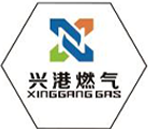
Dec . 04, 2024 16:24
Back to list
محطة تخفيض الضغط
Pressure Reduction Stations An Overview
Pressure reduction stations (PRS) play a crucial role in the distribution of natural gas and other fluids within pipelines. As the name suggests, these facilities are designed to reduce the pressure of the gas or fluid coming from high-pressure transmission lines before it reaches end-users, such as residential areas, commercial buildings, and industrial plants. The significance of PRS extends beyond just ensuring safety; they are essential for regulatory compliance, operational efficiency, and environmental protection.
Function and Importance
At its core, the primary function of a pressure reduction station is to mitigate the risk associated with high-pressure systems. High-pressure gas transmission pipelines transport gas from production areas to distribution networks, often under pressures exceeding 1,000 psi (pounds per square inch). If this gas were to be delivered directly to consumers at such high pressures, it could pose a severe risk of explosion, leaks, or other catastrophic failures. The PRS acts as a safeguard, lowering the pressure to safer, manageable levels, typically around 60 psi or less, which is suitable for end-use applications.
Beyond safety, PRS are integral to maintaining a stable and reliable supply of gas. Fluctuations in demand can lead to variations in pipeline pressure. Pressure reduction stations are equipped with control mechanisms that can automatically adjust the output pressure in response to changes in demand, ensuring that the supply meets consumption without disruptions. This dynamic management helps prevent scenarios of over-pressurization or under-delivery, ultimately enhancing customer satisfaction and system reliability.
Components of a Pressure Reduction Station
A typical pressure reduction station consists of several key components
.
2. Pressure Regulators These devices are the heart of the PRS, responsible for reducing the high inlet pressure to a lower outlet pressure. Regulators can be adjusted manually or automatically, depending on the design of the station.
محطة تخفيض الضغط

3. Overpressure Protection Devices These safety mechanisms protect against unforeseen pressure spikes. They ensure that if the system exceeds a designated pressure level, the excess gas is safely released or redirected to prevent damage.
4. Flow Meters These instruments measure the flow rate of gas through the station, providing critical data that helps operators monitor usage patterns and adjust supply as needed.
5. Filters and Scrubbers Gas quality is essential for both safety and efficiency. Filters and scrubbers remove impurities and particulates from the gas, preventing damage to downstream equipment and ensuring compliance with quality standards.
6. Control Systems Modern PRS are often equipped with advanced control systems that allow for remote monitoring and automated adjustments based on real-time data, improving operational efficiency.
Environmental Considerations
As environmental concerns continue to grow, pressure reduction stations are also adapting to be more eco-friendly. Many stations are now integrating technologies that minimize methane leaks, a potent greenhouse gas. Enhanced monitoring systems enable operators to detect and address leaks swiftly, improving the overall environmental footprint of gas distribution.
Conclusion
In conclusion, pressure reduction stations are vital infrastructures that ensure the safe, reliable, and efficient delivery of gas to consumers. By reducing high-pressure gas to usable levels, they mitigate risks associated with transmission, support operational efficiency, and contribute to environmental protection efforts. As technology evolves, the role of PRS will undoubtedly expand, adapting to meet the challenges of a rapidly changing energy landscape. The importance of investing in state-of-the-art pressure reduction technology cannot be overstated, as it not only enhances safety and reliability but also supports broader sustainability initiatives in the energy sector.
Next:
Latest news
-
Safety Valve Spring-Loaded Design Overpressure ProtectionNewsJul.25,2025
-
Precision Voltage Regulator AC5 Accuracy Grade PerformanceNewsJul.25,2025
-
Natural Gas Pressure Regulating Skid Industrial Pipeline ApplicationsNewsJul.25,2025
-
Natural Gas Filter Stainless Steel Mesh Element DesignNewsJul.25,2025
-
Gas Pressure Regulator Valve Direct-Acting Spring-Loaded DesignNewsJul.25,2025
-
Decompression Equipment Multi-Stage Heat Exchange System DesignNewsJul.25,2025

